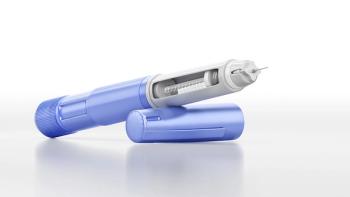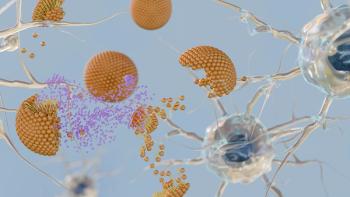
- BioPharm International June 2025
- Volume 38
- Issue 5
- Pages: 19–22
Advances in Digitalization and Automation of Aseptic Processing
The increasing diversity and complexity of injectable drug products is driving innovation.
As the number of biologic drugs has grown in the pharmaceutical pipeline and market, aseptic manufacturing capabilities have steadily grown in importance. Assuring sterility across many different modalities and product formats/sizes/volumes (e.g., vials, cassettes, prefilled syringes/pens, microdosing systems, intranasal delivery systems, on-body devices, bags, etc.), many of which are increasingly potent, has also become more challenging. Innovation in processing technologies has been essential to address the evolving needs of manufacturers. Key areas of development have included digitalization and automation solutions.
Repeatability and speed with improved quality and yield
Digitalization and automation provide numerous benefits to aseptic processing operations. Two of the most important, according to Alex Strauss, senior principal process equipment engineer with Curia, are greater speed combined with improved repeatability. “The key to automation is having a recipe-driven approach that is qualified. When the operator selects the recipe, the process is then repeatable. In addition, processes such as visual inspection can be completed much more rapidly than is possible by human operators and with incredible accuracy,” he explains.
New filling systems, adds Tom Clemens, senior director of engineering and facilities at Lifecore Biomedical, perform non-destructive weight checks of individual products immediately after filling, improving quality and increasing batch yields. Many also include automated camera verification systems to check vial crimping and stopper placement. “When an issue is detected, the system can automatically stop the line so the problem can be investigated immediately, avoiding costly material losses and potentially much longer production delays,” he says.
Impact of growing isolator adoption
Many newer biologic products, including antibody-drug conjugates, radio-immunoconjugates, and cell and gene therapies, require high containment solutions to ensure operator safety. The diversity of products with high activity produced in multiproduct facilities has also created the need for effective solutions that reduce cross-contamination risks.
Regulations such as Annex 1 requirements in the European Union (1) have also been an important driver toward greater adoption of isolator technology to increase product safety by minimizing potential human impacts on sterile drug products, according to Clemens. Many manufacturers have therefore been shifting to the use of isolators for aseptic processing.
“Due to the nature of these closed, isolator-based filling systems, automation and robotics have been incorporated to perform necessary processing steps within the sterile environment,” Clemens observes. For instance, he notes that while older systems may have required an operator to remove a lid from a ready-to-use (RTU) tub of vials or syringes, many new isolator fillers use automated systems that heat the lid adhesive and then remove the lid from the tub with a variety of rollers. “This approach,” Clemens states, “reduces human contact and potential particle generation.”
Automated visual inspection
Visual inspection operations are another area that has benefited significantly from advances in automation and digitalization technologies. These automated visual inspection systems use high-speed cameras and advanced software to automatically check for particulates and defects and can operate at fairly high speeds, according to Strauss. The Syntegon system deployed at Curia’s Albuquerque, NM facility, for instance, can inspect 400 vials per minute, matching the filling system’s filling speed.
As importantly, newer automated visual inspection systems are now available that can reliably evaluate highly viscous formulations (in excess of 100,000 centipoise) in vials and syringes, which they were previously not able to do. “Traditional automated visual inspection systems spin a vial/syringe and rely upon a camera to enable evaluation of the internal movement of the product to identify contaminants, which is not a suitable approach for viscous formulations because they do not flow in the same manner as lower viscosity solutions,” Clemens explains. Newer systems, he comments, incorporate additional cameras and advanced virtual image processing to identify particulates and defects and can even improve performance over time by incorporating machine learning algorithms.
Robotics simplify operations
Robotic systems do not just support the incorporation of aseptic filling processes within isolators and visual inspection activities. They have been widely implemented in sterile drug manufacturing processes to automate many different repetitive tasks, including vial filling, sealing, and labeling. By automating these activities, human interaction with sterile drug products is minimized, reducing contamination risks. Furthermore, robotic systems minimize product losses and enable the accurate filling of products that require only very small volumes.
Robotic systems can also eliminate some of the steps required when human operators are more involved in the aseptic filling process. For instance, the VarioSys Flex Line system at its Albuquerque, NM facility uses robotics to remove vials from a pre-sterilized tub, eliminating the need for a vial washer and sterilizing tunnel, according to Eric Schneider, director of global equipment engineering at Curia.
“In manually operated systems, it is not possible to aseptically remove primary containers without obstructing the first air (uninterrupted unidirectional filtered airflow used to provide a sterile environment) and/or subjecting the vials to scratches, etc., thus creating the need for additional steps,” Schneider says. With the VarioSys Flex Line, operator interventions are minimized, simplifying the process while also affording improved quality and safety outcomes.
Schneider does caution, however, that even the best robotics and automation systems still rely on human operators. “Training programs for operators are essential,” he emphasizes. To address this need, Curia operates Sterile University, a program designed to provide both training for new employees and continuing education for all manufacturing and quality staff through a simulated manufacturing environment that replicates the facilities, equipment, operations, and protocols found at the company.
Improvements in automated and digitized analytics
Automation and digitalization of analytics that support aseptic processing has several benefits as well. One of them, according to Jon Kallay, senior scientific portfolio specialist for microbial solutions with Charles River Laboratories, has been the facilitation of the adoption of rapid testing techniques that enable faster product release while still ensuring product quality.
One challenge with complex biologics highlighted by Kallay is the tendency for these products to appear turbid during routine sterility testing due to their physicochemical properties. Identification of such turbidity during manual visual inspection operations typically prompts a lengthy evaluation process to confirm the turbidity is not due to contamination.
Rapid test methods that evaluate multiple attributes, such as detection of adenosine triphosphate, respiration, and other microbial indicators, when combined with automated analysis of test results, provide accurate indicators and eliminate the subjective aspect of test results, Kallay contends. “Analysts no longer need to shake a bottle and determine if it fits their understanding of ‘turbid.’ Results are automatically analyzed and determined to be positive or negative based on the standards established during the validation of the technology,” he says. “Objective results eliminate unnecessary procedures while allowing quick release of product to patients,” Kallay concludes. In addition, more rapid access to test results allows users to respond quickly to any contamination events that could impact the facility and other product lots.
Digitizing the test process also improves data integrity. Documentation errors are not uncommon when test results are managed manually, according to Kallay. With digital test technologies, however, test materials and results are immediately documented and automatically transcribed to the laboratory information management system (LIMS) data storage system, avoiding opportunities for operator error.
Real-time monitoring is a game-changer
The ability to collect real-time manufacturing data during aseptic processing has been, according to Clemens, a real game-changer, as it has made it possible to monitor quality in a proactive rather than a reactive manner. Lifecore Biomedical, for instance, uses a dashboard approach displayed on monitors throughout the facility to keep a watchful eye on manufacturing operations real-time and quickly identify and resolve line stoppages. “Trending and identification of variances, such as between shifts, also support identification of specific groups of operators that could benefit from additional training or opportunities for improving the mix of operator experience levels within shifts,” Clemens notes.
A specific example of an important development in real-time monitoring, according to Laura Choteau, quality control manager at Catalent Biologics, has been the introduction of real-time monitoring for visible particles. “Today, automation allows us to read culture plates from the start of incubation through to the end, with full traceability of the plate’s location and condition throughout. As a consequence, we can detect contamination risks much earlier and respond immediately. That reduces the likelihood of recurring contamination and helps us get much closer to identifying the root cause,” she comments.
Other notable examples of process analytical technology tools improving aseptic processing operations, according to Jean-François Boé, senior director of drug product development for Catalent Biologics, include onboard mass spectrometry and Raman spectroscopy systems embedded into compounding or fill/finish units. “The data generated from these instruments give us real-time visibility into critical process parameters. In the long term, this level of control could reduce the need for traditional final release testing, shifting more quality assurance upstream and closer to the point of manufacture,” he says.
Like Schneider, Boé emphasizes the role still played by human operators in many monitoring activities. For instance, air monitoring systems in Grade A areas still often require operators to insert culture plates, typically using glove ports. This need does carry a small but real risk of contamination, as well as the potential for plate insertion to be accidentally skipped, which would create a gap in monitoring and raises questions during batch review. These issues could be avoided, Boé says, with the use of robotics to install the plates, which would “add a layer of reliability to aseptic operations and increases confidence in the process.”
New data management software equally impactful
Automation in analytics has been around for some time and continues to improve with advances in technologies. What has driven a real shift, according to Choteau, has been how the generated data are managed and used. “Data management plays a central role in helping us act faster and make smarter decisions in aseptic environments. Modern LIMS platforms now allow us to automate calculations and perform trend analysis continuously, which provides more frequent and reliable insights, helps ensure accuracy, and allows quality teams to concentrate on investigations when abnormal trends appear,” she explains.
Off-the-shelf, user-friendly visualization and reporting software, meanwhile, has enabled engineering teams to use data in a way that would have required significant involvement of information technology personnel in the past, Clemens notes. For example, Lifecore Biomedical tracks all line interventions digitally. “Having operators identify reasons for interventions in a consistent manner from shift to shift enables our engineering teams to identify trends and take corrective actions before real issues arise,” he says.
Furthermore, both process efficiency and control are also increased. “Automation brings greater control and traceability. It minimizes sampling errors, confirms that all required samples have been taken, and provides a clear record for each action. This helps maintain compliance and strengthens confidence in our processes,” Choteau states.
Staff training, like with other aspects of digitalization and automation of aseptic processing, remains an essential component, however. Operator readiness to respond in the event of system failures must be maintained, and staff must be able to manage operations manually when needed, according to Choteau. Data security, she adds, is equally important. “Protecting data from cyber threats and ensuring its integrity remains a top priority as more systems become connected and automated,” Choteau observes.
Digital twins support effective process simulation
Modeling is an important aspect of digitalization that is benefiting many process development and manufacturing activities, including sterile production operations. Digital twin technology, for instance, is becoming increasingly valuable in drug substance manufacturing and beginning to show potential in aseptic fill/finish operations, according to Boé.
Digital twins in the pharmaceutical manufacturing context are virtual models of processes that are continuously updated with real-time data, allowing assessment of performance. “By creating a digital replica of equipment and processes, digital twins help us simulate scenarios, predict outcomes, and optimize parameters before moving to physical implementation,” he says. Boé finds this approach especially useful during process transfer, because it allows teams to anticipate risks, reduce variability, and avoid costly delays.
Artificial intelligence has growing value
Digital twins are not the only example of how automation and digitalization are being combined with artificial intelligence (AI), machine learning (ML), and other advanced computing capabilities to further improve aseptic processing. When leveraged together, these myriad technologies are accelerating timelines and enhancing process control, according to Boé.
As an example, Boé points to the benefits AI-driven models can provide for freeze-drying (lyophilization) processes. In particular, he notes they can be used to optimize cycle development, significantly reducing the time required to reach a robust process and positively impacting project timeliness and resource efficiency.
In fact, Boé expects AI and ML to play an even larger role and provide growing value as complexity—product, process, and equipment-related—continues to increase. “AI and ML help with not only data analysis and trending, failure prediction, and workflow optimization; they also support more informed decision making. All of these benefits ultimately lead to greater efficiency and reliability of aseptic manufacturing operations,” he concludes.
Reference
1. EC. Annex 1. Manufacture of Sterile Products. EudraLex–Volume 4–Good Manufacturing Practice (GMP) Guidelines. August 2023.
Article details
BioPharm International®
Vol. 38, No. 5
June 2025
Pages: 19–22
Citation
When referring to this article, please cite Challener, C.A. Advances in Digitalization and Automation of Aseptic Processing. BioPharm International 2025 38 (5).
Articles in this issue
7 months ago
Qualifying Expertise for Quality Support7 months ago
Guidance on Quality Culture Standards7 months ago
Inspiring DevelopmentsNewsletter
Stay at the forefront of biopharmaceutical innovation—subscribe to BioPharm International for expert insights on drug development, manufacturing, compliance, and more.




